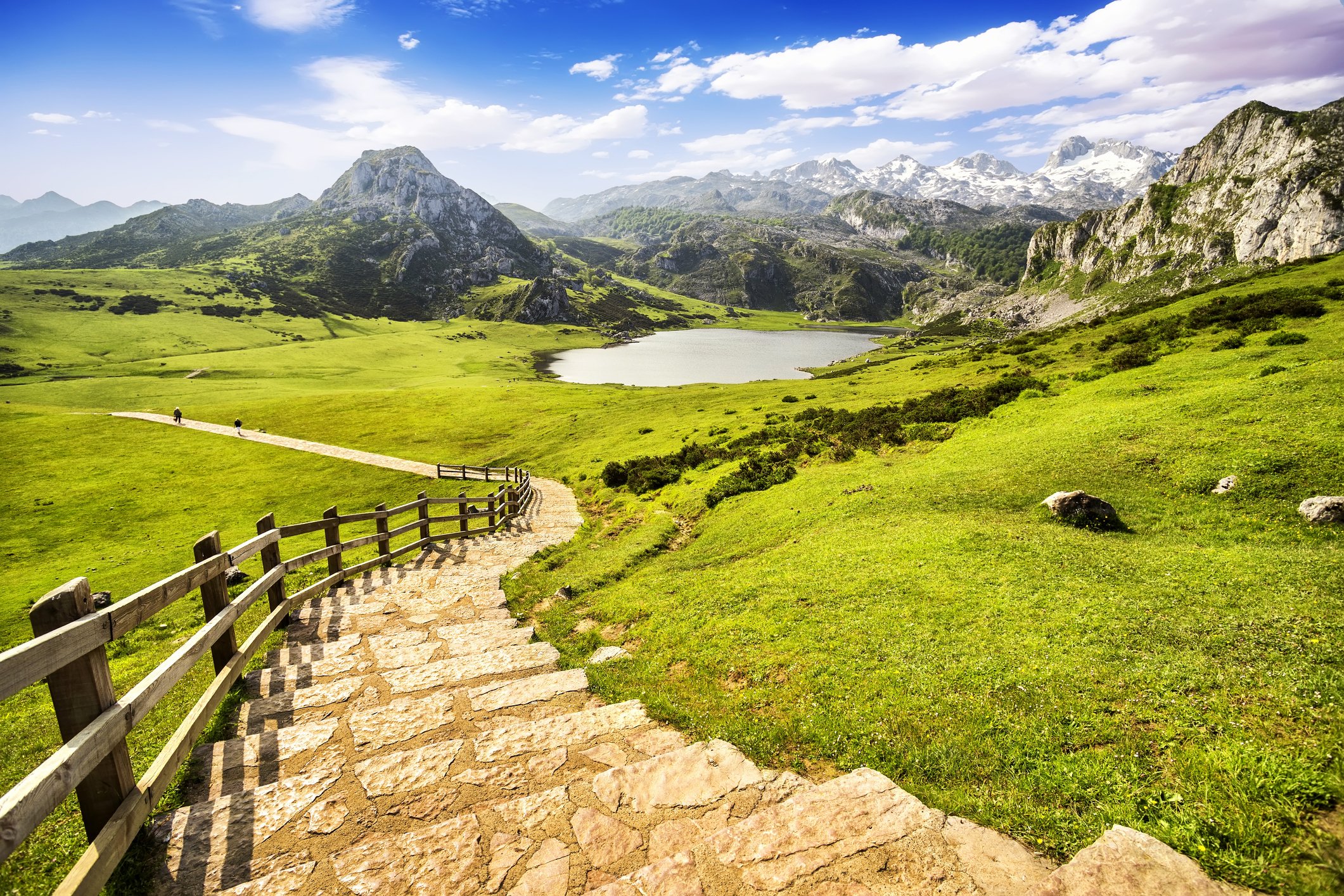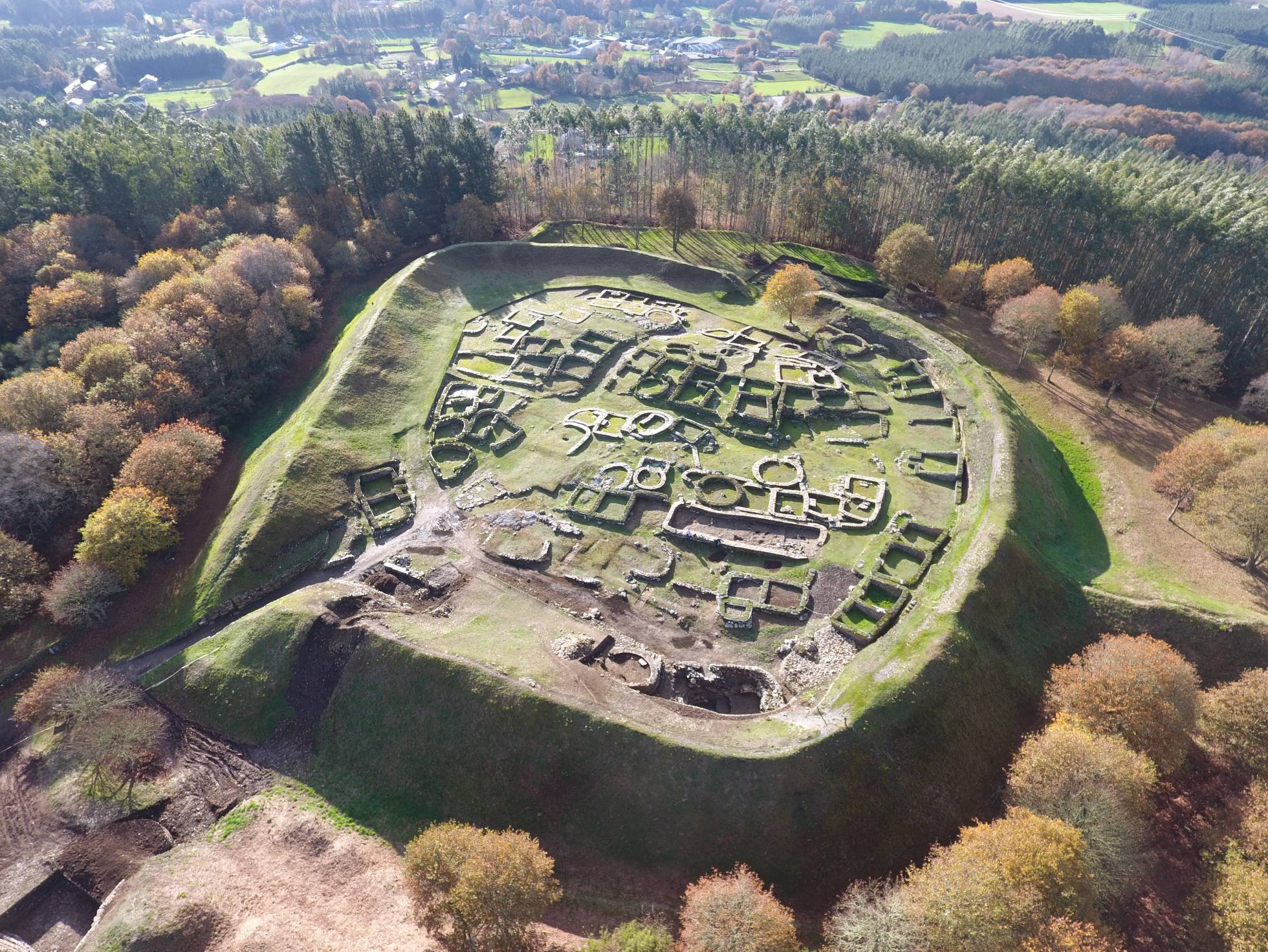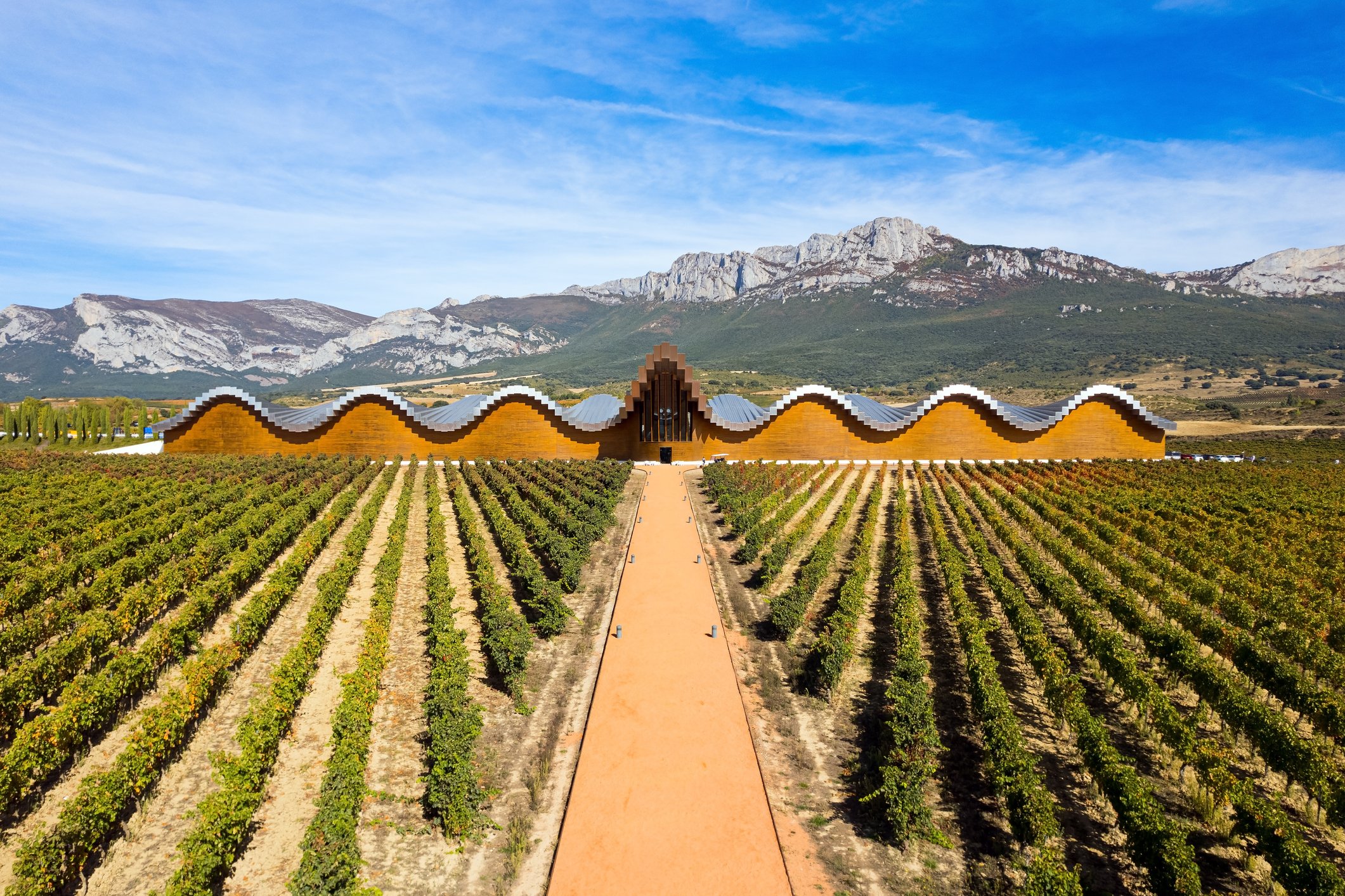The Hidden Treasures of Green Spain
Northern Spain, also known as "Green” Spain, is a region that boasts a culture and history that is distinct from the rest of Spain.
Nestled along the pristine Bay of Biscay, this enchanting region spans the length of the French border to the Atlantic and is comprised of the autonomous regions of Galicia, Asturias, Cantabria, and the Basque Country.
With its oceanic climate and lush greenery, it feels like a country apart. Unlike the rest of Spain, the region was also relatively less influenced by Moorish rule, and so many of its cultural influences are northern European – exemplified by its fine, well-preserved pre-Romanesque, Romanesque and Gothic art and architecture.
Green Spain is a destination that beckons inquisitive tourists in search of something unique and extraordinary. A refreshing alternative to the more conventional Spanish tourist hotspots, and a fascinating tapestry of cultural traditions, it’s a natural beauty that’s largely unexplored by mainstream travellers. As you journey through this historically-rich region, you’ll encounter a plethora of impressive sights that showcase both natural and man-made wonders.
We’ve narrowed it down to the top six must-see highlights:
Picos de Europa
Within Green Spain lies one of the world's most awe-inspiring landscapes - the majestic Picos de Europa mountains (“Peaks of Europe").
This UNESCO-protected natural area offers magnificent vistas of rugged beauty, lovely lakes and stunning scenery. It is not only visually magnificent, but it also has historical significance as the beginning point for the Christian Reconquest of the Iberian Peninsula. Don Pelayo, the Asturian ruler, took sanctuary in the Picos de Europa in 722 CE, where he launched the Reconquista by defeating the Muslims at the Battle of Covadonga.
Other famous sites include Canga de Onis and the Covadonga sanctuary lying inside the park's boundaries. The former is an ancient town that was important in the Reconquista, while the latter is a gorgeous basilica and Marian shrine.
Celtic Castros
The Celtic Castros are ancient hilltop settlements that date back to the Iron Age, located throughout the northwest region of Spain, including Asturias, Galicia, and parts of Portugal. Built by the Celtic peoples who inhabited the area from the 8th to the 1st century BCE, many of these Castros were later transformed into Roman oppida, or fortified towns, as the Romans began to exert their influence on the region.
Dotted across the Galician landscape, each enjoys its own unique history and architecture. One particularly well-preserved Castro is the Castro de Viladonga (pictured above), located in the province of Lugo, Galicia, dating back to the 1st century BCE. This impressive site was first discovered in the early 20th century, with extensive excavations carried out between 1971 and 1996. Situated on a hilltop overlooking the River Eo, the settlement is organised around a central plaza, which was likely used for social and religious gatherings.
The site features a series of defensive structures, and the remains of numerous dwellings and workshops. Excavations have revealed a wealth of artifacts, including ceramics, coins and jewellery, now in the on-site museum, providing insights into the daily life and culture of the Castro's inhabitants.
Oviedo and the Kingdom of the Asturias
During the 9th century, the flame of Christianity was kept alive in the Iberian peninsula in the small Kingdom of the Asturias where an innovative Pre-Romanesque architectural style played a significant role in the development of the religious architecture of the peninsula.
Oviedo was established in the early 8th century after the Islamic conquest of the Iberian Peninsula, becoming the capital of the Kingdom of Asturias in the late 8th century, under the rule of King Alfonso II "the Chaste". Alfonso II was responsible for the construction of many of Oviedo's most important landmarks today, asserting its Christian identity in the face of Muslim rule in the south.
Now recognised as UNESCO World Heritage Sites, the most notable include Santa María del Naranco (pictured above) - originally built as a palace for King Ramiro I in the 9th century as part of a larger palace complex and later converted into a church; San Miguel de Lillo - built in the 9th century, serving as a royal chapel with architectural elements including horseshoe arches and decorative carvings; and San Julián de los Prados - also known as the Santullano and considered one of the finest examples of pre-Romanesque architecture in Spain, featuring a basilica-style floor plan, intricate carvings, and a large collection of religious frescoes.
Today, Oviedo is also home to the vibrant Bulevar de la Sidra, also known as the Cider Boulevard. This pedestrian-only street is lined with traditional cider houses, known as "sidrerías," where one can marvel at the waiters pouring this local speciality from a great height - a process known as "escanciar.”
The Roman Walls of Lugo
The Roman Walls of Lugo, a city in the region of Galicia, are an exceptional architectural, archaeological and constructive legacy of Roman engineering, dating from the 3rd and 4th centuries.
Now another UNESCO World Heritage site, these walls are an impressive example of military architecture, up to 10 metres in height and diameter, built to fend against barbarian invasions. Intriguingly, these stones in the walls are held together without mortar or cement using a technique known as opus quadratum. Consequently, the walls are extremely robust and resistant to wear and tear over time and from exposure to the elements.
Today, the defences of Lugo are the most complete and best-preserved example of Roman military architecture in the Western Roman Empire and visitors to Lugo can walk along the top of the walls (up to 2.2 kilometres) with 85 towers and ten gates to be explored. Offering panoramic views of the city and the surrounding landscape, the walls are also dramatically illuminated at night.
Coastline, Seafood & Wine
The shoreline of Green Spain is home to charming coastal villages that have a deep-rooted connection to maritime history. During the Age of Exploration, these towns produced several famous sailors and shipbuilders, including Sebastian Elcano. Born in the Basque town of Guetaria in 1476, Elcano achieved the remarkable feat of circumnavigating the globe before succumbing to scurvy while sailing the Pacific Ocean in 1526.
The Green Spain coastal villages are also known for their delectable seafood cuisine, featuring fresh catch from the Cantabrian Sea. The region is home to the world's largest mussel beds, located in the picturesque Rias Baixas region, and produces some of the world's most exquisite Alberino wine.
A must visit is the extraordinary Bodega Ysios winery (pictured below) located in the wine growing region of La Rioja. This ‘temple dedicated to wine’, designed by contemporary architect Santiago Calatrava with its Gaudí-inspired roof and mountain backdrop, makes for an excellent location for wine tasting. The winery was established in 2001 and is owned by the Pernod Ricard group, with a focus on the Tempranillo grape variety.
Santiago de Compostela & the Pilgrim’s Route
The capital of the province of A Coruña, the city of Santiago de Compostela, is best known as the final destination of the Camino de Santiago, a pilgrimage route that has been traveled by millions of people for over a thousand years.
Home to the Cathedral of Santiago de Compostela, which is believed to house the remains of St James - the apostle and patron saint of Spain - Santiago de Compostela is a charming and historic city, with narrow streets and beautiful architecture that dates back to the Middle Ages. The Portico de la Gloria, the main facade of the cathedral, has carvings of 200 figures referring to the Apocalypse, and St James welcomes the pilgrims to their final destination.
Some of the city's other notable landmarks include the Plaza del Obradoiro, a grand square that is home to the cathedral, the Monastery of San Martín Pinario, and the Hostal de los Reyes Católicos, a historic hotel that was originally a pilgrims' hospice.
For those visiting in the summer, the Fiestas del Apóstol is a week-long festival to celebrate the feast day of St James, and features a wide range of activities and events, including concerts, exhibitions, street performances, and religious processions. One of the highlights of the festival is the "Ofrenda al Apóstol" (Offering to the Apostle), in which thousands of pilgrims and locals dress in traditional Galician costumes and offer flowers to the statue of St James in the cathedral.
The festivities reach their peak during what is known as the Apostle's Fires, when the 'botafumeiro' or giant incense burner is swung through the cathedral as an offering to the Saint, before a spectacular fireworks display is set off from the top of the Monte Pedroso, just outside the city centre. According to legend, St James appeared to the Christian armies fighting against the Moors in the Battle of Clavijo in the 9th century, wielding a sword and riding on a white horse. The battle was won, and St James was thereafter known as the "Matamoros" or "Moorslayer." The fireworks display is said to represent the sword of St James and is a powerful symbol of victory and triumph over adversity.
Green Spain is a magnificent travel destination, boasting a world of contrasts, rich history and unique cultures. From the awe-inspiring mountains of Picos de Europa to the charming medieval villages lining the picturesque coastline, this region offers a refreshing departure from the beaten path, allowing you to bask in the authentic beauty of Spain's north coast.
Tour Northern Spain & Portugal
Our 19-day tour roughly follows the route of the pilgrims on the Camino Francés, from the forward-thinking port city of Bilbao in the Basque country to Burgos and León, high on the plains of Castile. We’ll cross the mountains outside picturesque Oviedo and travel on to the Atlantic via the green fields of Celtic Galicia to the celebrated city of Santiago de Compostela.
From here we leave Spain, descending into the country of Portugal, journeying south via Porto, with its stately bridges and fine port wine, to Portugal’s fascinating and often overlooked capital, Lisbon.










